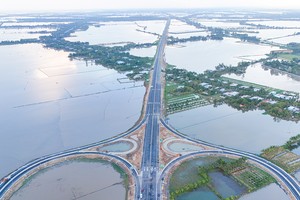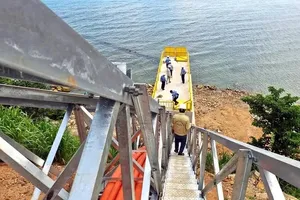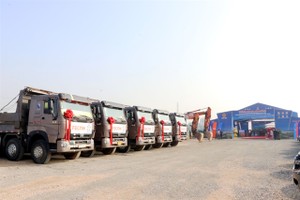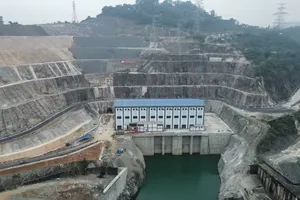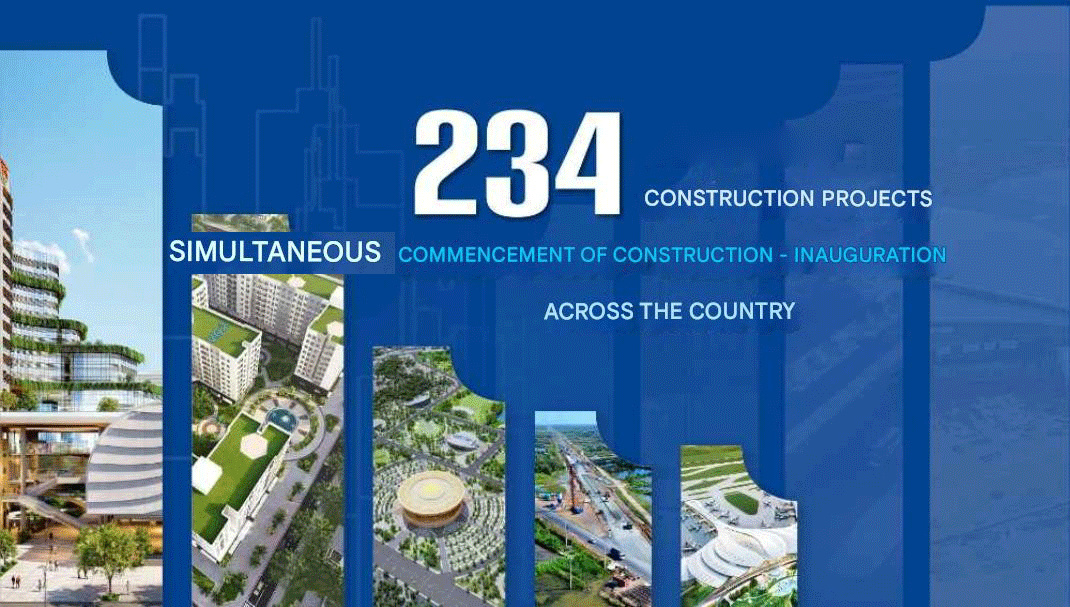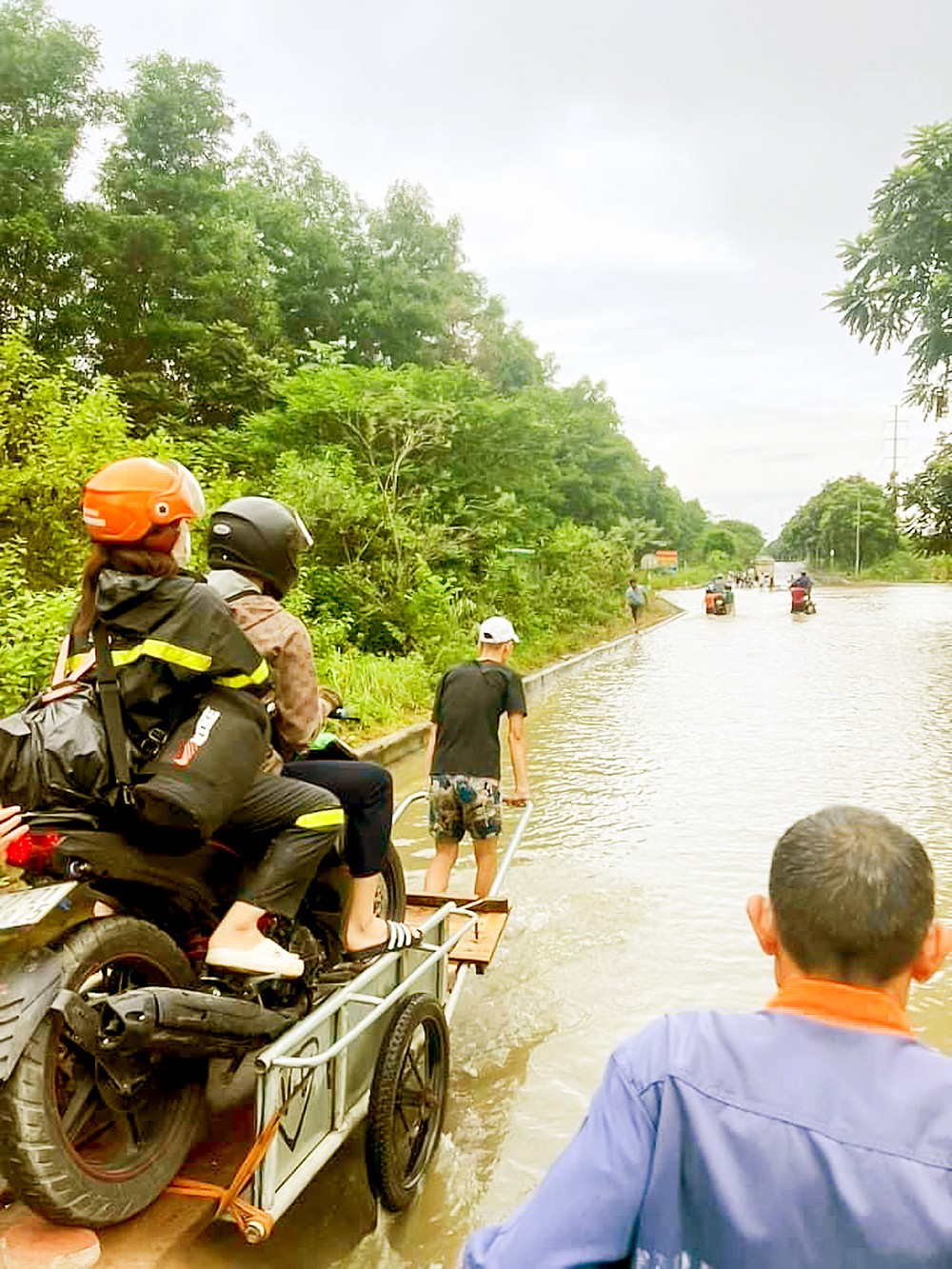
Specifically, on July 26, the underpass near Phu Do Overpass (Nam Tu Liem District, Hanoi), which connects to Duong Noi Ward (Ha Dong District) and Dai Mo Ward (Nam Tu Liem District), was still submerged with 20-30 cm of water despite the hot weather of 35-36 degrees Celsius. Motorcycles and low-clearance cars had difficulty passing through.
By the afternoon of July 28, the water level had not receded. Still, it had risen, doubling the flooding compared to July 26 due to heavy rain overnight into the morning of July 28. Water from the Nhue River surged into the underpass, nearly submerging motorcycles and forcing low-clearance cars to turn back, while motorcycles risked stalling if they attempted to pass through.
According to Hanoi Sewerage and Drainage Company Limited, the areas along Thang Long Avenue affected by rainwater flooding include underpasses No.3, No.5, No.6, and Km9+656. The flooding is due to the high water levels of the Nhue River (part of the Western Hanoi drainage system) exceeding drainage capacity.
On July 25 and 26, the company opened the Thanh Liet Dam (at the end of the Nhue River) to discharge water into the Red River and increased the operation of pumping stations in Southern and Western Hanoi, such as Khai Thai and Yen Nghia, to rapidly lower the Nhue River water levels.
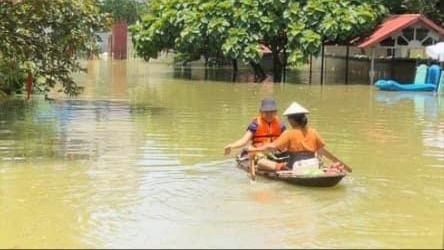
However, by July 28, not only were several underpasses heavily flooded, but some sections of Thang Long Avenue’s service roads in Quoc Oai and Thach That districts also experienced renewed flooding, particularly in Phu Cat Commune of Quoc Oai and near the Hoa Lac High-Tech Park in Thach That.
Some villages in Quoc Oai and Chuong My districts of Hanoi have been continuously flooded since July 23. In particular, in Ben Voi Hamlet, Can Huu Commune (Quoc Oai District), the water has risen nearly 1 meter due to overflow from the Tich River.
According to the SGGP reporter’s findings, the persistent flooding in these areas is due to heavy rainfall on July 28 and increased water discharge from the Hoa Binh Hydropower Plant.
As of 4 p.m. on July 28, Vietnam Electricity Group reported that the Hoa Binh Hydropower Plant was still discharging nearly 7,000 cubic meters per second through three spillway gates. Typically, when the Hoa Binh Hydropower Plant releases floodwaters, water levels in the Red River and Day River rise quickly, slowing drainage in the Nhue, Tich, and Bui rivers, and potentially causing backflow as these rivers discharge into the Day River.
The National Center for Hydro-Meteorological Forecasting reports that from July 29 to 30, the Northern region will experience moderate to heavy rain and thunderstorms, with some areas receiving up to 250mm of rainfall. The North Central Coast and the Central Highlands will also have scattered showers and thunderstorms, with some places receiving over 70mm. Heavy rain will continue in the Northern region from the night of July 30 to July 31, gradually decreasing from the night of July 31.
Experts warn of flash floods and landslides in mountainous areas, flooding in low-lying regions, urban flooding from short, intense rains, and potential tornadoes, lightning, and strong winds during thunderstorms.



